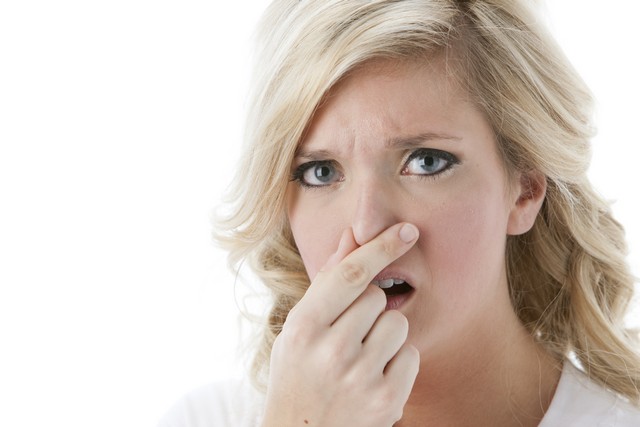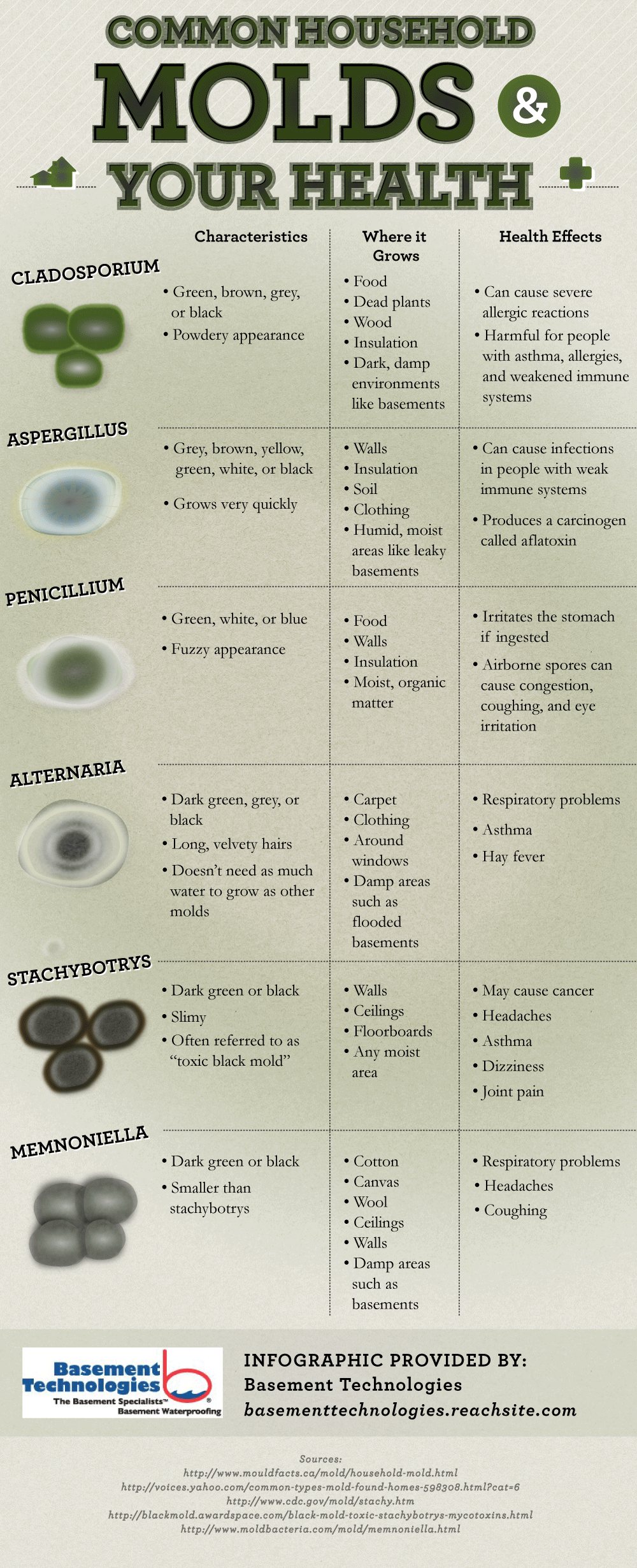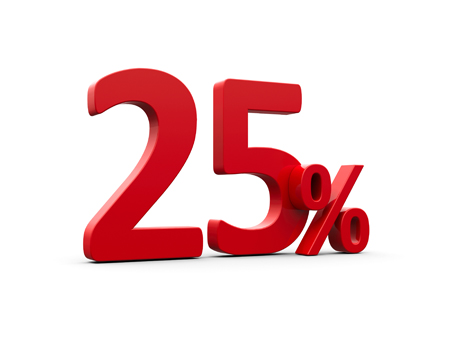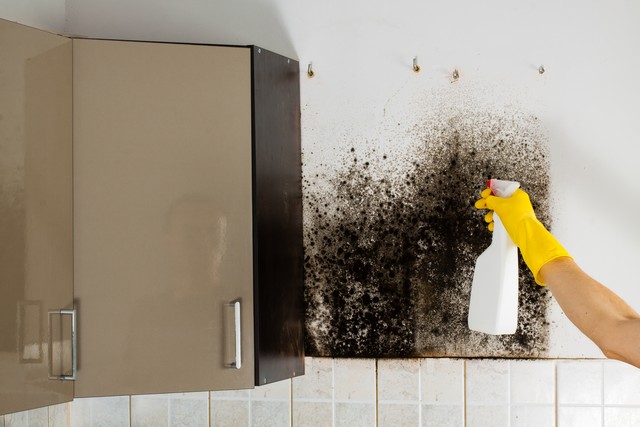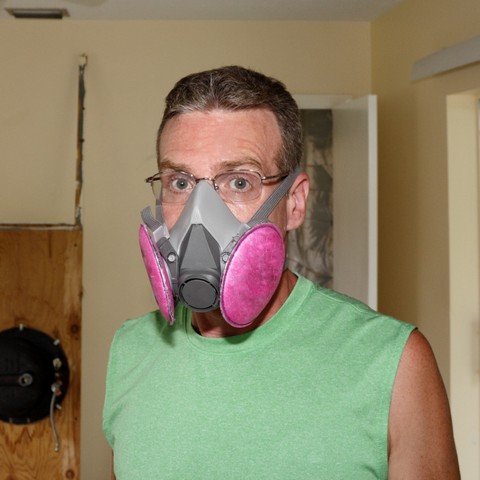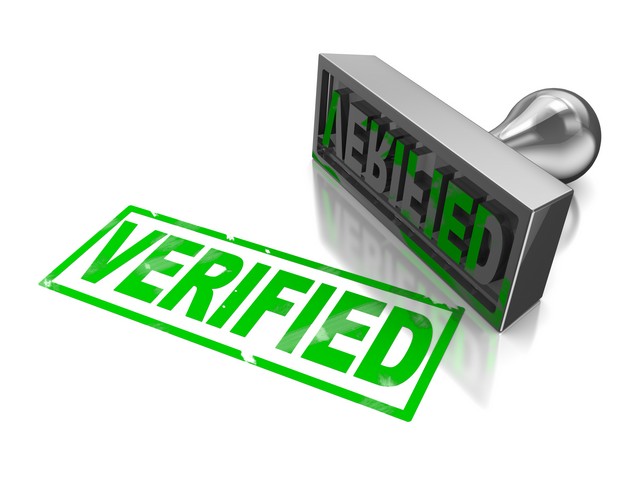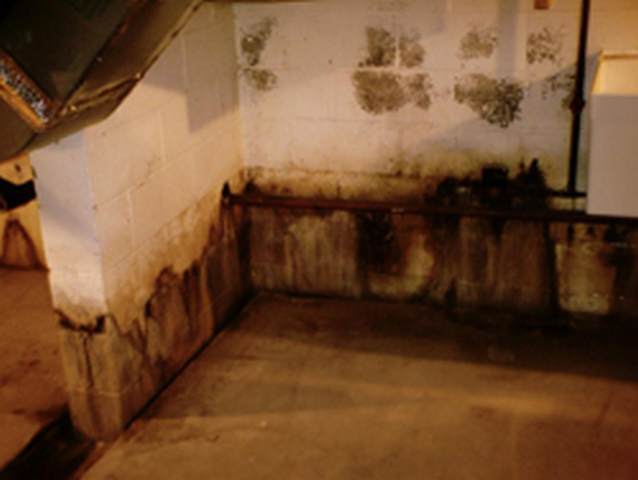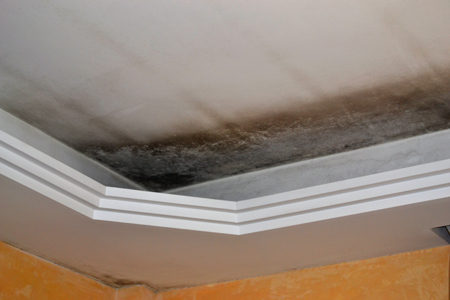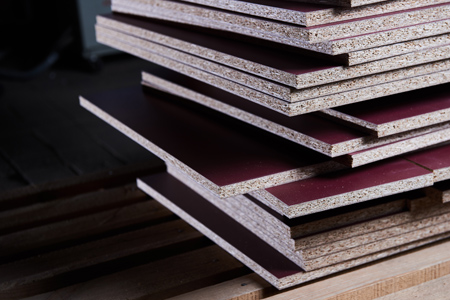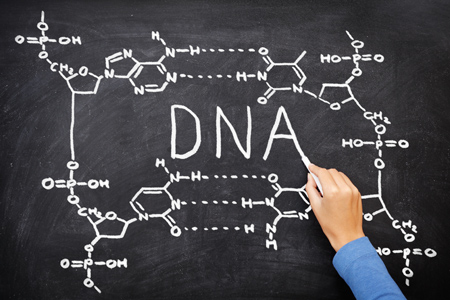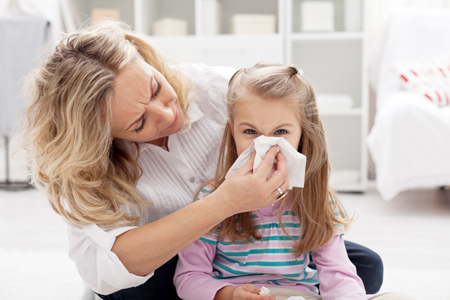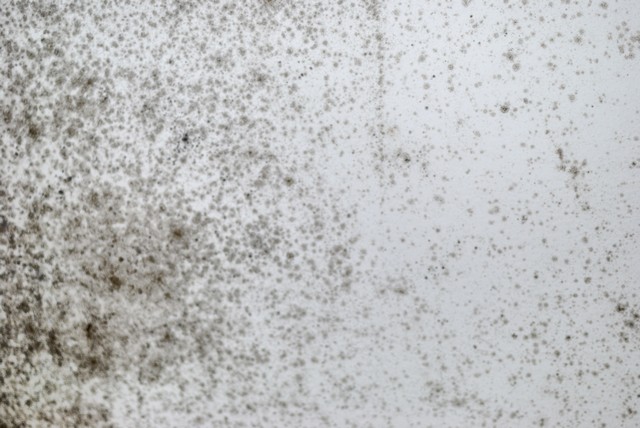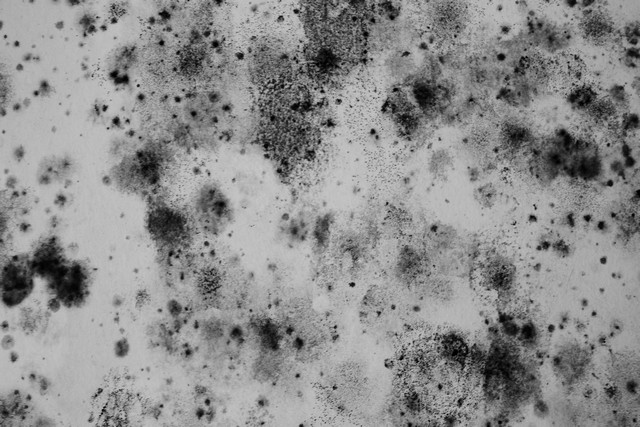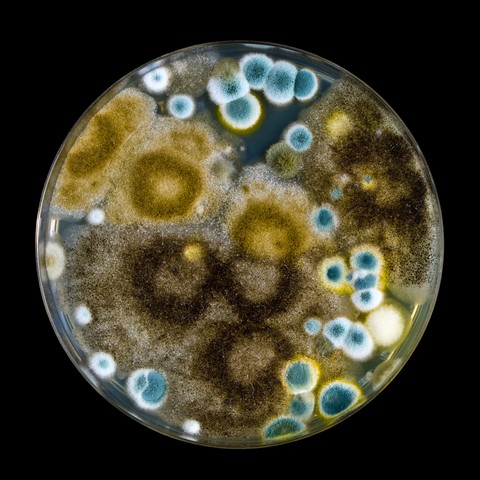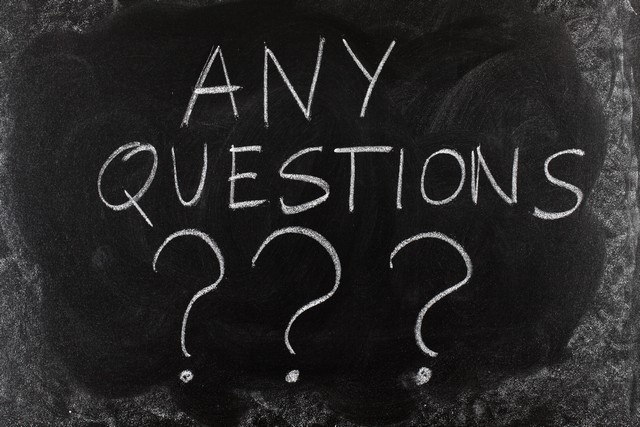
by Eric Brown | Nov 3, 2017 | Basement Mold, black mold removal Atlanta, black mold removal Georgia, Bleach and Mold, Can Mold Kill?, Commercial Mold Remediation, Commercial Mold Removal, Flood, Flood Clean Up, Flood Damage Mitigation, Flood Damage Restoration, Health, Homeowner Tips, Indoor Air Quality, Killing Mold, Mold Facts, Mold Information, Mold Inspection, Mold Remediation, Mold Removal, Property Damage Restoration, Questions and Answers, Toxic Mold
Top 10 Tips To Prevent Basement Mold!
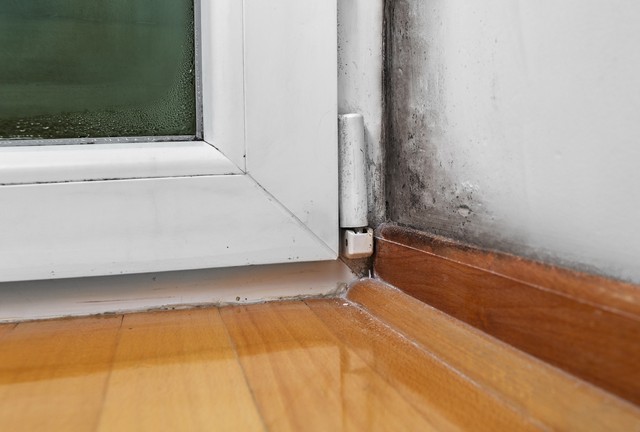
Top 10 Tips To Prevent Basement Mold!
If you’ve started to notice a musty smell in your basement, you may have mold in your home.
Musty odors are sometimes described as earthy and urine like.
Basements have the potential to be dark and damp places.
Add water and moisture to this equation and you have the perfect conditions for mold growth.
The odour you smell is most likely caused by the mold excreting mycotoxins.
Molds will release spores in the air as a defense mechanism to find more moisture and food, contributing to further mold growth.
If you do have mold growth, the key is to contact Mold B Gone to investigate the situation. Mold B Gone has been serving Atlanta, Georgia area consumers and business owners since 2009. Over the years, we have removed mold from many crawl spaces. In addition to crawl space mold removal, the other area of a home that we specialize in is the basement.
This article provides you with ten tips to prevent mold in your basement. These tips are very important if your basement was recently flooded. Implement these tips to avoid future headaches and costly mold removal in the future.
Top 6 Mold Species You Will Find In Your Basement!
The infograpnhic below lists the top 6 mold species that could be growing in your basement.
To determine the species our staff will either gather the spore count in the air using our air quality testing equipment or take swab or tape samples of visible mold. The samples are then sent to an independent lab to verify the species and spore count.

Top 6 Mold Species You Will Find In Your Basement
Ten Tips To Prevent Mold In Your Basement

Top 10 Tips To Prevent Basement Mold!
Fix The Flooding Source!
The first step to preventing future flooding is to determine the cause and fix it. Most basements flood because of backed up drains, leaky pipes, human error (i.e. leaving a tap on), sewer back ups, the lack of a sump pump and/or a malfunctioning sump pump.
Start The Clean Up As Soon As Possible!
The onset of mold will begin within 24 to 48 hours, so it is essential that you begin the clean up immediately.
Hire Experienced Professionals!
If mold is not properly contained and cleaned properly, it can become airborne and contaminate even larger areas of the property.
You need to hire properly trained professionals, like Mold B Gone, who understand how to properly restore a water damaged property and prevent mold growth. Mold growth prevention is important because of the health impact it has and also because mold will impact the structural integrity of the property.
Remove All Wet and Contaminated Materials!
Most insurance companies will not recommend a complete gut for cost savings. Usually they recommend that it is necessary to only remove one foot of drywall above the flood line.
We do not because this could result in long term mold problems because moisture can creep up behind the surface. For this reason, we recommend a complete gut of the basement because the extra short term cost could result in significant long term cost savings.
The last thing you want to happen is for a reconstruction to occur only to find out six months later that you now have a mold problem.
Removal of all the drywall is not our only recommendation. We also suggest the removal of following: all flooring, including the sub-floor; insulation because it absorbs moisture; and finally, if the electrical panel was submerged under water, it should be replaced as well.
Avoid Using Bleach For Clean Up!
As stated by Michael Pinto, CEO of Wonder Makers Environmental:
“Perhaps the most misunderstood aspect of bleach when proposed as a cleaner or sanitizing agent is that its effectiveness is greatly reduced in the presence of organic material. To be a successful sanitizer, bleach must be used on clean materials and surfaces. This is why bleach products are used in the laundry after the wash cycle or in a commercial kitchen as a component in the third sink after the dishes have been washed and rinsed. The efficacy of bleach as a sanitizer is also compromised by heat and light. Despite the fact that the chlorine odor may linger for some time after use, bleach loses strength so quickly that it is not considered to have a residual effect that would prevent future bacterial or fungal growth.”
Do Not Begin Any Rebuild Until the Basement Is Completely Dried Out!
We understand that a flooded basement disrupts your life and you want to resume your normal routine as soon as possible. However, patience is the key.
To avoid any future mold issues that could make you sick, measure the humidity levels and ensure that job was done properly by hiring a third party to perform an indoor air quality test.
In addition, if the flood water was category 3, we recommend that swab tests be performed to ensure that the cleaning process was done effectively.
Only after it is verified that the basement is completely dry and sanitized and clearance testing verifies that the indoor air quality is healthy should the basement rebuild begin.
Properly Insulate Your Basement!
According to Mike Holmes, a respected contractor, insulation is one of the most important factors in preventing basement mold:
“When air, which is full of moisture, leaks into that insulation, it will inevitably lead to mould. Here’s why: Your basement, like every room in your home, has its own natural air convection. The air nearest the ceiling is warmer, and the air nearer the floor is cooler. The cold air at the bottom pushes the warm air up. As it rises, it comes into contact with the cooler exterior wall and releases the moisture it’s holding. It condensates. That air and moisture — if it’s able to get into the batt insulation through a gap in the seal — will wick into the insulation. Over time, it will soak that batt to the point that water can drip down the walls and pool on to the floor….You need a thermal break to stop hot from meeting cold….So, use closed cell spray foam insulation or rigid foam insulation, which will provide a thermal break and not trap any moisture. If you’re using foam insulation boards, make sure you Tuck Tape every seam, and spray-foam all corners and joints to create a 100% seal and a perfect thermal break. That way, you’ll know that anything you do inside your finished basement won’t have to be torn out in a few years because of mould.”
Cross-Ventilate!
If possible, open the windows on all sides of your basement in the evenings when the air is cooler to create a cross-ventilation air flow which will prevent excessive moisture and also ensure that a steady stream of fresh air is circulating throughout the basement.
Ensure Water Drains Away From Your Home’s Foundation!
One of the most effective ways to prevent water intrusion is to ensure that water is not sloping towards the foundation of your home but away from it. This is particularly important if your basement walls are porous and can trap moisture, which can lead to mold. To avoid this, ensure that the ground slopes away from the foundation walls of the home and your downspouts extend at least 6 feet away from the property.
Invest In A Dehumidifier!
To prevent excess moisture in your home, use a dehumidifier and consider waterproofing your basement by sealing cracks in the floor and walls with hydraulic cement and a concrete waterproofing sealer where the floor meets the walls.
Got Basement Mold Questions?

Got Basement Mold Questions?
Call 678-697-6267, or contact us via e-mail.
We specialize in mold detection and mold removal and have helped 1000s of customers because we understand why mold grows and follow an 8 step procedure to ensure that the cause of the mold problem is fixed before we remove the mold.Our ultimate goal is to ensure that mold does not grow back, which we back with our guarantee on our services. We look forward to serving you! 🙂

by Eric Brown | Oct 20, 2017 | 37 Symptoms Associated With Mold Illness, Can Black Mold Poison You?, Can Mold Kill?, Chronic Fatigue Syndrome (CFS), Chronic Inflammatory Response Syndrome (CIRS), Commercial Mold Remediation, Commercial Mold Removal, Health, Homeowner Tips, How Toxic Is Mold?, Indoor Air Quality, Killing Mold, Mold and Asthma, Mold and Chronic Fatigue Syndrome, Mold and Depression, Mold and Genes, Mold and Multiple Sclerosis, Mold and Parkinson's Disease, Mold and Pregnant Women, Mold and Sids, Mold and Sinusitis, Mold Facts, Mold Information, Mold Inspection, Mold Remediation, Mold Removal, Mold Sensitized Customer Testimonial, Property Damage Restoration, Questions and Answers, Stachybotrys Black Mold
What Impact Do Genes Have On Mold Illness?

What Impact Do Genes Have On Mold Illness?
Mold B Gone specializes in helping mold sensitized individuals.
One of the questions we are often asked is why do some people get sick from mold and other’s do not?
One of the biggest challenges faced by people sick from mold is the fact that doctors, friends, and other family members dismiss their symptoms simply because they do not get sick when exposed to mold.
Many victims of mold sickness are labelled as hypochondriacs and are accused of not being sick at all.
This is tragic because many people that get sick have no control over their sickness because their bodies have a genetic pre-disposition to mold illness.
The other major problem with mold illness is the fact that there are so many symptoms, 37, associated with it, meaning it is difficult for physicians to pinpoint the cause.
This article explains how your genes impact mold illness and what you can do if you suspect that you suffer from Chronic Inflammatory Response Syndrome (CIRS).
Legal Challenges Faced By Mold Sensitized Individuals

Legal Challenges Faced By Mold Sensitized Individuals
Sickness from mold has been around for decades.
Victims of mold have tried to plea their cases in the courts seeking compensation for the health damages caused by poorly maintained homes and buildings that had water damage and mold.
Unfortunately, many of the plaintiffs lost their battle because the courts did not believe that mold actually makes people sick.
Despite this, data from thousands of contractors working with occupants of water-damaged buildings documented the health challenges that many mold sensitized individuals faced.
According to Erik Johnson, a mold expert and survivor, it was not until the 1990s, that the World Health Organization, acknowledged that “Sick Building Syndrome” could be caused by toxic mold.
Moving forward, finally, it seems that there is greater recognition that mold is in fact the cause of sickness for many. In 2015, the MOLDY documentary featured health professionals and people who have suffered mental and physical health issues after living in moldy homes. This was a ground breaking documentary because it brought the issue of mold and sickness to a much broader audience, thereby creating significant awareness of this issue.
In a presentation at the PLR Expo in Toronto, Canada, in 2015, CEO of Wonder Makers Environmental, Michael Pinto presented “12 Future Trends In The Restoration Industry“.
One of the most notable trends he cites is a “A Tighter Connection Between Medicine and Environment“.
Pinto cites new diagnosing techniques to identify the illness, Chronic Inflammatory Response Syndrome (CIRS) (detailed below), which legitimizes the tie between Water Damaged Buildings (WDB) and sickness. Research has identified a genetic component to this condition (explained below), a screening test (VCS), and most importantly, a treatment regimen.
Other trends Pinto believes demonstrate the important ties between medicine and the environment include the Environmental Relative Moldiness Index (ERMI) which is a scientific test that analyzes dust samples for 36 mold species. This test provides base information to identify CIRS because 26 of the mold species are considered to be water damage indicators.
This test is important because one sample can be analyzed to identify the extent of water damage in the building that could make someone susceptible to CIRS sick. Importantly, this test will provide an ERMI score, ie. a HERTSMI-2 score that can be given to physicians and will help them assess whether a building will make their patient sick.
Because of the growing medical awareness and the fact that there are now medical tests and drugs to diagnose and treat mold illness, Pinto believes that one of the other consequences of this acknowledgement will be a “More Active Justice System” where plaintiffs will now be able to get compensation because they now have science to back up their claims.
25% Of People Have A Genetic Predisposition to Mold Illness

25% Of People Have A Genetic Predisposition to Mold Illness
The most interesting aspect of the research on the effect that Sick Building Syndrome has on patients pertains to genetics. One of the biggest problems with mold sickness is that it impacts everyone differently. Some may experience minor allergies, and other health conditions like asthma and chronic sinusitis, while other mold sensitized patients may suffer severe illnesses.
One physician documented the health symptoms of 227 patients that lived in water damaged buildings during a three year period. What this doctor found was that 98% of his patients had one of the gene types where their immune systems were not able to effectively deal with contaminants from water damaged buildings.
As stated by Pinto:
“In layman’s terms, two different genes have been isolated, which keep some people’s immune systems from functioning properly when they have been exposed to contaminants from water-damaged buildings. Instead of properly identifying and eliminating the foreign invader, those body defense mechanisms increase the problem. When viewed with a basic understanding of genetic distributions, this research made it clear that up to a quarter of the population (25%) is at increased risk from exposure to water-damaged buildings.“
This research is very significant because it demonstrates that up to 25% of the population has a genetic pre-disposition that makes them more susceptible to mold illness and the condition known as Chronic Inflammatory Response Syndrome (CIRS).
Because of this research, the scientific community and legal system is now taking much greater notice because diagnostic tests, lab tests and treatment tools are being developed to help these patients.
37 Health Conditions Associated With CIRS!

37 Health Conditions Associated With CIRS!
Listed below are the 37 symptoms associated with CIRS.
- Fatigue
- Weakness
- Aches
- Muscle Cramps
- Unusual Pain
- Ice Pick Pain
- Headache
- Light Sensitivity
- Red Eyes
- Blurred Vision
- Tearing
- Sinus Problems
- Cough
- Shortness of Breath
- Abdominal Pain
- Diarrhea
- Joint Pain
- Morning Stiffness
- Memory Issues
- Focus/Concentration Issues
- Word Recollection Issues
- Decreased Learning of New Knowledge
- Confusion
- Disorientation
- Skin Sensitivity
- Mood Swings
- Appetite Swings
- Sweats (especially night sweats)
- Temperature Regulation or Dysregulation Problems
- Excessive Thirst
- Increased Urination
- Static Shocks
- Numbness
- Tingling
- Vertigo
- Metallic Taste
- Tremors
According to Dr. Ritchie Shoemaker, CIRS is:
“an accute and chronic, systemic inflammatory response syndrome acquired following exposure to the interior environment of a water-damaged building with resident toxigenic organisms, including, but not limited to fungi, bacteria, actinomycetes and mycobacteria as well as inflammagens such as endotoxins, beta glucans, hemolysins, proteinases, mannans, c-type lectins and possibly spirocyclic drimanes, plus volatile ogranic compounds.“
For 75% of the population, when exposed to biotoxins caused by mold, the individuals immune system responds by binding with the invading poison that allows its cells to filter the biotoxins through the liver, kidneys, and other organs. In contrast, 25% of the population that have the genetic susceptibility to mold illness get sick because their bodies immune system does not bind to the biotoxin, meaning it is not eliminated and therefore continues to circulate, causing the many symptoms, documented below.
The “C” in CIRS refers to the term “Chronic” because individuals that are exposed to poisons from mold are unable to eliminate the toxins from their body, resulting in on-going and escalating sickness, particularly if the person is continually exposed to mold. This is the primary reason that the first priority of medical practitioners treating mold sensitized patients is to begin the detox process which also must coincide with movement away from the building that is constantly exposing the person to the toxins.
The “I” in CIRS refers to the term “Inflammatory” because the constant exposure to the toxins creates a cycle of sickness, meaning the individual’s immune system is constantly trying to fight the toxins, leading to inflammation.
The “R” in CIRS refers to “Response” because the human body is designed to respond to invading toxins. In the case of patients suffering from mold sickness, the immune system is constantly trying to fight the toxins causing a stress on the complete immune system of the individual, which in turn leads to other health conditions.
As stated by Pinto, the “S” in CIRS refers to “Syndrome” because:
“The symptoms are a result of many factors, including external exposures and internal responses. The contaminants from water-damaged buildings should trigger the activation of an immune response, but some people’s genetic structure does not allow the proper recognition of the biotoxin. Since this combination of circumstances inhibits the clearance of the poison from the body, these harmful substances continue to circulate and create continual damage. With such individuals there is no linear dose/response relationship, meaning that even trivial exposures can create severe problems.“
Is CIRS Life Threatening?

Is CIRS Life Threatening?
The major problem that individuals with CIRS face is their bodies immune systems become severely compromised and weakened from the vicious cycle of invading poison, immune response, and inflammation.
The end result is many of their bodies systems are damaged leading to a wide range of health conditions, some life threatening.
For this reason, many mold survivors have reported that they have abandoned the primary residence that initially made them sick; instead, seeking shelter in trailer parks, and very dry areas, with desert like conditions where moisture is limited. These drastic measures were taken by these individuals because their bodies have become so sensitized to mold that even minor exposure triggers severe reactions.
Fortunately, the continued research on mold sickness is creating hope because treatments have developed that help individuals detox and eliminate the poisons, followed by rebuilding the immune system so that it regains strength.
Do You Suspect You Have A Mold Illness?

Do You Suspect You Have A Mold Illness?
The core problem with CIRS is the fact that there are so many symptoms associated with the condition.
Are you constantly seeking medical attention?
Have you been feeling sick for an extended period of time?
If you think you may be sick because of mold, review the mold sensitized interviews to gather more information.
The next step is to verify that you actually have a bio-toxin illness caused by mold, meaning you should get your home tested for mold.
Then seek out an environmental physician who can properly diagnose, determine if you have a genetic pre-disposition to mold illness, and most importantly begin treatment so your body can properly detox.
If you are diagnosed with mold illness, your physician may request that you leave your home for awhile during the detox process.
During this period, we advise that you get all the mold removed from your home, your contents cleaned, and a thorough cleaning of your HVAC system to prevent the spread of mold spores after the remediation is complete.
Got Mold Questions?

by Eric Brown | Oct 6, 2017 | black mold removal Atlanta, black mold removal Georgia, Bleach and Mold, Can Mold Kill?, Commercial Mold Remediation, Commercial Mold Removal, Dead Mold Spores, Health, Homeowner Tips, How Toxic Is Mold?, Indoor Air Quality, Killing Mold, Mold Facts, Mold Information, Mold Inspection, Mold Remediation, Mold Removal, Mold Removal Cost, Stachybotrys Black Mold, Toxic Mold
How Qualified Is Your Mold Removal Contractor?

How Qualified Is Your Mold Removal Contractor?
One of the goals of Mold B Gone is to help customers in the Atlanta, Georgia area with their indoor air quality needs. We specialize in mold removal and are considered one of the best companies in our area for mold remediation.
The core problem with this industry is the fact that there is not much regulation, which means that any contractor can offer mold inspection or mold removal services.
Some states require licensing, which is great, but if you live in an area without licensing requirements, this can create an atmosphere where unskilled, inexperienced, and untrained contractors can offer mold removal services.
This creates a situation where a simple mold problem could be made worse because the contractor did not know what they were doing.
So, how do you know if the contractor you call is qualified to remove mold from your home or business?
The purpose of this article is to list and explain the top 10 clues that the mold removal contractor you called may not have the training or experience to properly remediate your mold problem.
#1: The Contractor Concludes You Have Mold Without Providing A Valid Explanation Or Investigation Further!
Really? How does the contractor know? You know there is a problem if the contractor claims you have mold without doing any testing of the area.
#2: The Contractor Fails To Explain How They Will Test For Evidence Of Mold!
Since there are many different kinds of tests, you need someone who uses the right kind of test to assess whether you have a problem.
Tape testing, swab testing, air quality, and ERMI testing are some tests that are used to determine if you have a mold problem. Make sure that you work with a qualified mold inspection specialist who understands how to test whether or not you have a mold problem so that a proper protocol can be put in place.
This is important! Without the right kind of test, at the end of the job, you won’t know if the mold problem was properly rectified.
#3: The Contractor Does Not Want Their Work To Be Verified By A Third Party!

#3: The Contractor Does Not Want Their Work To Be Verified By A Third Party!
If you begin working with a contractor and they do testing and find mold, make sure you ask them how the quality of their work will be verified.
We recommend that you get a Pre-Test and a Post-Test. The purpose of the Pre-Test is to measure the spore count inside of the property and compare it to outdoor levels. This is done using specialized equipment that takes samples of both the indoor and outdoor air. The samples are then sent to an accredited laboratory to be analyzed. The lab will then issue a report documenting the spore count and the mold species that is found in both the indoor and outdoor samples. Once this data is determined, the contractor should explain to you what mold spores were found in your home or business and how it compares to the outside. If there is a huge difference and the spore count indoors is higher than outdoors, then you will have some pertinent information to compare to the Post-Test once the work is complete.
The purpose of the Post-Test is to do the same as the Pre-Test. In this case, however, the spore count indoors should be close to or equal to the outdoor spore count. If the data shows this, then the indoor fungal ecology of the home is healthy. The Post-Test, in short, verifies that the mold remediation was successful.
When you decide to work with a contractor make sure you understand what they will do to restore the fungal ecology of your home to healthy levels. Reputable contractors will provide you with the lab results of the Pre and Post tests and will offer you the option of using a Third Party to do the Post Test should you choose to do this.
Pre and Post testing is like a check and balance system, meaning someone else is checking the efficacy of the work. Without this test, you will never know if the mold removal was successful.
To summarize, here are the three key reasons you should invest in Pre and Post testing:
- So you know if you have a problem that actually needs remediation. Testing will verify this!
- So that you know at the end of the job a clearance test tells you if you got what you paid for. A lot of times mold damage is clearly evident, so it’s okay to waive the first test. However, the final clearance test provides protection from mold scams and peace of mind that your home or business is safe.
- Finally, because it’s part of the IICRC recommended standard for mold removal!
#4: The Contractor Gives You A Price Quote Without Doing A Formal Site Inspection!
Believe it or not, some contractors will give you a quote over the phone without even visiting your home or business.
If you get a price over the phone, definitely stay away from this contractor for two key reasons:
- One of the goals of reputable mold removal contractors is to identify the moisture source that is causing the problem. How can a contractor provide a quote without knowing this?
- Most importantly, how can a quote be provided unless an actual site visit and inspection is done to know the full extent of the mold damage.
#5: The Contractor Refuses To Provide Evidence Of Training!
Before you commit to working with any mold removal contractor, always ask if they have specialized training. Mold removal is considered a profession because professionals invest in specific training through organizations like the IICRC, RIA, CMRS, etc. Always find out about the training and experience. In fact, in a previous blog, we listed 10 questions you should always ask to pre-screen prospective contractors you want to hire.
#6: The Contractor Does Not Provide You With A Detailed Estimate!

#6: The Contractor Does Not Provide You With A Detailed Estimate!
You should never work with a contractor that gives you a one line estimate that simply states “mold removal” and then the “price”. Demand a detailed written estimate so you know exactly what you are paying for.
If you don’t demand a detailed estimate you may face other charges when the contractor shows up to do the job. Some contractors provide minimal detail in the estimate because they want to up-sell or up-charge you for other work.
There are some cases when unforeseen issues on a property present themselves after a job starts. But a detailed written estimate before you sign the contract outlines what will be done on the basis of a professional assessment. The estimate and contract protects both the contractor and the property owner because it clearly states the limitations (i.e., what will and won’t be done) before the work starts.
#7: The Contractor Wants 100% Of Payment Before The Job Starts!
If you are comfortable with the contractor and have properly pre-screened and done your due diligence and have a signed contract, you may be asked for a deposit to cover some of the costs for doing your mold removal job.
However, if the contractor asks for 100% of the payment up front, you may want to re-consider hiring this contractor because you will have very little recourse if the job is not done right.
We recommend that the final payment be made once all the work, according to the signed contract, is complete and you have a successful Post-Clearance test that assures you that the job was done properly and the indoor air of your home or business is healthy.
#8: The Contractor Gives You An Unbelievable Low Price!
Mold removal can be costly because professionals follow detailed steps to ensure that it is done properly and to avoid contaminating other areas of your property.
If you get three estimates and one estimate is a lot lower than the others, keep in mind that “you get what you pay for”. In short, the cheapest price is not the best indicator of competent service. Rather, it usually indicates the reverse.
#9: The Contractor Attempts To Pressure You Into Making A Decision Using Scare Tactics!

#9: The Contractor Attempts To Pressure You Into Making A Decision Using Scare Tactics!
Finding mold in your home or business can be scary. Because of this, some contractors behave like predators, using scare tactics to close the sale on their next potential victim.
The key point to remember if you find mold is not to panic or get to stressed out. Stay focussed on finding the best trained contractor to deal with your mold concerns.
It is important to understand that we are surrounded by mold all the time because it is in our environment and part of the eco-system to break down dead organic material. Mold is nature’s recycler and will always be a problem when it is growing indoors because the spore counts will increase to unhealthy levels.
If you suspect you have mold and contact a contractor, be sure to ensure that you get all the information in order to make a sound decision! This is very important; if you do have mold, you want to ensure that it is removed the right way the first time by a mold removal professional who knows what they are doing.
If you are pressured into making a quick decision and not encouraged to seek other estimates or given time to do your due diligence, then be careful, particularly, if in order to close the sale, the contractor resorts to pressure tactics or scare tactics.
Any contractor that uses pressure or scare tactics without providing you with evidence from testing and/or does not try to determine the cause of your mold problem may just be trying to pressure you into a quick sale.
#10: The Contractor Recommends Bleach!
Avoid mold removal contractors that recommend the use of bleach for your mold removal job. Bleach does not work and is not recommended by experienced industry professionals.
We do not recommend bleach for three key reasons:
- Bleach does not address the cause of the mold problem!
- Bleach is dangerous!
- Bleach evaporates!
For an in depth explanation why we do not recommend bleach, read this article: Killing Mold Is Not The Answer!.
Now that you understand some of the tactics used by unqualified or unscrupulous contractors to try to get business, let’s look at the five key steps you can take to protect yourself…
How To Choose A Professional Mold Removal Contractor?

How To Choose A Professional Mold Removal Contractor?
The best way to ensure that you choose an experienced professional is to ask questions and educate yourself!
- Find out what training the contractor has received and from what organization.
- Ask if the contractor recommends Pre and Post testing.
- Get a detailed mold removal action plan, often referred to as the Scope of Work. The report will guide the remediation activities of the mold damage restoration.
- Once you have that indoor air quality test result, get a written, detailed estimate describing the mold damage restoration project.
- Finally, it’s a good idea to get 3 different bids from 3 different contractors. This way you’ll know the price range for the project. If you get an extremely low bid, make sure you compare apples to apples. If a price seems too good to be true, it usually is. The risk of a low bid is that proper attention to detail won’t be followed. Proper attention to detail includes things like creating containment and following proper procedures for removing contaminated materials from the property. These two steps prevent contamination to the rest of the property.
One final point. Mold will only grow if there is moisture, ie. a water source. The key to long lasting mold prevention is to first identify the source of moisture. With this in mind, make sure you hire a contractor who will do this before any mold remediation activities begin. If the source of the moisture isn’t identified and corrected any mold removal activities will be wasted effort.
Got Mold Removal Questions?

Got Mold Removal Questions?
Mold B Gone, is dedicated to helping homeowners and business owners in the Atlanta, Georgia area. One of the reasons we are so passionate about education is we know that an informed consumer will be able to make better and informed decisions. We have built a reputation of trust in our service area because of our focus on education and our guarantee.
When you have questions about mold removal, don’t hesitate to send us an e-mail or call our experts at 678-697-6267. Peace of mind is just a phone call away!

by Eric Brown | Sep 22, 2017 | Attic Mold, Basement Mold, Beware Of Mold When Buying A Home, black mold removal Atlanta, black mold removal Georgia, Bleach and Mold, Can Black Mold Poison You?, Can Mold Kill?, Chronic Fatigue Syndrome (CFS), Chronic Inflammatory Response Syndrome (CIRS), Commercial Mold Remediation, Commercial Mold Removal, Crawlspace Mold, Dead Mold Spores, Health, How Toxic Is Mold?, Indoor Air Quality, Killing Mold, Mold and Asthma, Mold and Chronic Fatigue Syndrome, Mold and Depression, Mold and Genes, Mold and Infants, Mold and Multiple Sclerosis, Mold and Parkinson's Disease, Mold and Pets, Mold and Pregnant Women, Mold and Sids, Mold and Sinusitis, Mold Facts, Mold In Apartment, Mold In Schools, Mold Information, Mold Inspection, Mold Remediation, Mold Removal, Mold Removal Cost, Mold Sensitized Customer Testimonial, Mold Sensitized Success Story, Stachybotrys Black Mold, Toxic Mold
September Is Mold Awareness Month!

Top 10 Reasons You Need To Be Aware Of Mold!
September 2017 marks the 9th annual Mold Awareness Month started by the National Indoor Mold Society:
“The purpose of National Indoor Toxic Mold Awareness Month is to inform, educate, and raise awareness about the adverse health effects due to exposure of indoor molds and mycotoxins.” (Executive Director, Letitia Peters)
According to Michael Pinto:
“The reason that mycotoxins are suspected of poisoning people is based on both science and observational connections. “Mycotoxin” is the term that scientists use for a variety of chemical compounds that are produced by fungi during their growth cycle (the official term for mycotoxins is “secondary metabolites”). The suffix toxin is found at the end of the word mycotoxin because a great number of these mold-produced chemicals have been proven to be poisonous to both insects and animals—including people.”
One of the goals of Mold B Gone is to educate consumers in the Atlanta, Georgia area about mold. We believe that every month should be mold awareness month. Since launching this site, we have had nearly 68,000 views from individuals interested in learning more about mold.
There are three key lessons you need to know about mold:
- Mycotoxins kill other things, like bacteria and viruses, so mold can continue to grow.
- Mold spores, whether dead or alive, can cause adverse health effects.
- There is no practical way to eliminate all molds and mold spores in the indoor environment; the way to control indoor mold growth is to control moisture.
Considering that some molds, like Stachybotrys chartarum and Aspergillus, produce myctoxins that cause sickness, the purpose of this article is to list and explain the top 10 reasons you need to be aware of mold.
#1 Mold Needs Less Than 2 Days To Begin Growing!

#1 Mold Needs Less Than 2 Days To Begin Growing!
Mold requires three key ingredients to grow:
- Food: wood & wood products; paper and other paper products like cardboard and wallpaper; leather; fabric and upholstery; grout; painted walls; cement; plaster (drywall); ceiling tiles; insulation materials; and carpet.
- The ideal temperature of 41 degrees to 100 degrees Fahrenheit; and
- Moisture, the key ingredient.
In the presence of moisture, the ideal temperature, and ample food, mold will begin growing within 24 to 48 hours. This is the reason that water damage restoration is so important during a flood event!
#2 Mold Causes Chronic Sinusitis!

#2 Mold Causes Chronic Sinusitis!
According to Doctors at the Mayo Clinic, David Sherris, Eugene Kern, and Jens Ponikau, chronic sinusitis is caused by a fungus and is an immune reaction:
“Medications haven’t worked for chronic sinusitis because we didn’t know what the cause of the problem was. Fungus allergy was thought to be involved in less than ten percent of cases. Our studies indicate that, in fact, fungus is likely the cause of nearly all of these problems. And it is not an allergic reaction, but an immune reaction. This is a potential breakthrough that offers great hope for the millions of people who suffer from this problem. We can now begin to treat the cause of the problem instead of the symptoms. Finally we are on the trail of a treatment that may actually work.”
This conclusion was based on a research study of 210 patients with chronic sinusitis. The Doctors collected mucus samples from the patients’ noses and discovered fungus in 96 percent of the patients. In addition, they identified 40 different kinds of fungi, averaging out to 2.7 types per patient.
Further research was done on 101 of these patients by removing nasal polyps. What they found were eosiniphils, which are which blood cells activated by the immune system in the nasal tissue of the patients. The Doctors believe that this discovery shows that the body’s immune system is sending the eosinophils to attack the fungi which is what is causing the irritation and inflammation of the membranes of the nose. For this reason, they do not believe that traditional treatments work because they do not address the root cause of the problem, fungi, which will continue to irritate the nose membranes.
#3 Your Home Is A Buffet For Mold!

#3 Your Home Is A Buffet For Mold!
Mold is nature’s recycler, it’s main purpose in our eco-system is to break down dead organic material.
In the outdoors, the relative number of spores is small enough not to cause significant harmful health effects for most people.
However, indoors, once mold begins to grow, it will cause health concerns because the spore counts will increase. Indoor air quality is a critical concern, particularly in hot and humid climates like Georgia because residents tend to stay indoors more and use their air conditioners for heat relief.
The problem with mold is the fact that most homes are made out of the material that it loves to eat. A home is an “all you can eat buffet” for mold because homes are constructed using dead organic materials: wood & wood products; paper and other paper products like cardboard and wallpaper; leather; fabric and upholstery; grout; painted walls; cement; plaster (drywall); ceiling tiles; insulation materials; and carpet.
#4 Mold Causes Asthma!

#4 Mold Causes Asthma!
“Infants who are exposed to mold in their living environments have nearly a three times greater risk of becoming asthmatic than those who did not have extensive mold exposure in their first year of life.” (Medical Evidence that Connects Mold Exposure to Illness Keeps Piling Up)
According to Medical News Today, asthma affects 300 million people in the world and more than 22 million Americans. Although people of all ages suffer from the disease, it most often starts in childhood, currently affecting 6 million children in the US. Asthma kills about 255,000 people worldwide every year.
Asthma is a respiratory condition marked by spasms in the bronchi of the lungs, causing difficulty in breathing. According to WebMD, no one really knows what causes asthma, but what is known is that it is a chronic inflammatory disease of the airways. Trigger and causes of asthma include allergies, tobacco smoke, environmental factors, obesity, genetics, and other factors.
According to Michael Pinto, CEO, of Wonder Makers Environmental, there is mounting evidence pointing to the link between mold and asthma.
To learn more about the link between mold and asthma, including legal evidence and research studies, click here.
#5 The Core Problem With Mold Is That It Can Grow Undetected!

#5 The Core Problem With Mold Is That It Can Grow Undetected!
Most people do not realize they have a mold problem because it is hidden.
Mold can be detected through smell, visual clues, and knowledge of the building history, ie. was there a flood or indoor leak.
One of the first signs that you have a mold problem will be a “musty” or “mildewy” odor.
The next step is to determine where the smell is coming from.
The seven areas of the home that you will likely find mold includes the following: bathrooms and kitchen that have leaks under the sink; leaks behind appliances (refrigerator, dishwater, and washing machine); ceilings and walls where there are water leaks; window sills and around the windows where condensation accumulates; your basement; closets; and crawl spaces.
#6 Modern Day Building Practices Promote Mold Growth!

#6 Modern Day Building Practices Promote Mold Growth!
The rush to make quick money and high profits by real estate developers has created a disaster waiting to happen because new homes built today are more susceptible to mold growth.
- The quest to reduce energy bills means that many new homes are air tight and lack proper ventilation, conducive to mold growth.
- The season that the home was built is also a factor. For instance, if the home was built during a period when there was lots of rain and the foundation was not allowed to completely dry before installing the insulation and vapor barrier, then moisture could be trapped behind the walls.
- Building practices have changed. In the past, most homes were built with non-porous materials like plywood and timber which made it difficult for mold to penetrate the surface. Today, cost conscious builders use Orient Strand Board (OSB) and particle board which are porous and susceptible to mold growth.
According to the MOLDY documentary, at least 50 percent of homes in the United States have water damage issues caused by water line leaks, tears in moisture vapor barriers, leaky showers, condensation under eaves, and water pooling in crawl spaces. It is this water damage which causes mold to grow.
Improving building practices to prevent moisture issues is the single most effective way to prevent mold.
#7 25% of the Population Is Susceptible To Mold Illness!

#7 25% of the Population Is Susceptible To Mold Illness!
According to Dr. Richie Shoemaker, physician and expert in the field of biotoxin-related illness and author of the book Surviving Mold, 1 in 4 people have a genetic pre-disposition to the mold illness, Chronic Inflammatory Response Syndrome (CIRS):
“Genes made them prime targets for an assault by their own innate immune systems….exposure to the interior environment of a Water-Damaged Building (WDB), [causes] an innate immune response that is going haywire.”
Individuals exposed to the toxins in a water damaged building suffer from chronic illness because their bodies are trying to eliminate the foreign substances that stay in the body resulting in chronic inflammation and multiple symptoms.
It is difficult to diagnose CIRS because there are 37 symptoms patients could suffer from: fatigue; weakness; aches; muscle cramps; unusual pain; ice pick pain; headache; light sensitivity; red eyes; blurred vision; tearing; sinus problems; cough; shortness of breath; abdominal pain; diarrhea; joint pain; morning stiffness; memory issues; focus/concentration issues; word recollection issues; decreased learning of new knowledge; confusion; disorientation; skin sensitivity; mood swings; appetite swings; sweats (especially night sweats); temperature regulation or dysregulation problems; excessive thirst; increased urination; static shocks; numbness; tingling; vertigo; metallic taste; and tremors.
#8 Mold Will Reduce Your Property Value!

#8 Mold Will Reduce Your Property Value!
“Mold is a serious issue. If you leave it untreated, it continues to grow. It leads to respiratory illness and it rots the wood, leaving the property valueless.” (Ian Schlake of Respond and Rebuild)
Like a parasite or cancer, mold will continue to grow as long as there is a food source, moisture, and the right temperature.
The only way to stop mold is to address the moisture source to prevent future mold growth and then remove the contaminated porous materials. Effective, long lasting mold remediation is based upon identifying the source of contamination and ensuring it is fixed.
Failing to fix the underlying causes of the mold and effectively removing the mold will lead to reduced property values caused by structural damage as the mold continues to feed on the home.
#9 Mold Remediation Can Be Costly!

#9 Mold Remediation Can Be Costly!
As mentioned in an earlier article, the cost of mold remediation will depend on three key factors:
- How much of the area is infected with mold?
- What kind of materials are infected?
- How easy is it to access the mold?
On average, the typical household mold removal project will range from $2,000 to $6,000, but can be as high as $30,000 or more depending on the extent of contamination.
The core problem with the mold remediation industry is any contractor can offer mold removal services…so it is truly “Buyer Beware.” Because of the lack of regulation, many contractors believe they can offer mold removal services without the proper training or experience. To stay competitive, these contractors may offer “quick fix” solutions that focusing on killing the mold. However, as stated by Michael Pinto:
“Killing mold, but leaving the residue in place, is not acceptable. Since many health impacts can be triggered by exposure to both live and dead mold spores, the source and secondary contamination must be removed.” (MOLD INDOORS: Killing it is Not Enough)
Killing mold is not the answer because it is not a permanent solution to a mold problem. Professional mold removal contractors will follow an eight step process to ensure that your mold problem is fixed properly and will back up their work with a guarantee.
Don’t pinch pennies when you encounter a mold problem, the cheapest estimate may not necessarily be the best one. Do your due diligence, ask questions, get references, and most importantly avoid contractors that offer you magical solutions that involve just spraying a chemical to kill the mold dead.
#10 Mold Sickness Is A Hidden Epidemic!

#10 Mold Sickness Is A Hidden Epidemic!
According to the producers of the MOLDY documentary released earlier this year, most Physicians do not understand or have the knowledge to properly diagnose patients with mold sickness:
“Possibly every doctor in the United States is treating mold illness, and they just don’t realize it.” (Dr. Scott McMahon, MD)
Since most physicians are not trained to treat and identify mold illness, their patients continue to suffer in silence, mis-diagnosis, and a vicious cycle of numerous visits to different doctors and specialists that do not understand why they are sick.
Considering the statistics revealed in the MOLDY documentary it is not surprising that mold sickness is now considered a hidden epidemic.
- At least 45 million buildings in the United Stats have unhealthy levels of mold.
You have a 33% chance of being exposed to toxic mold when you move into a new home, apartment or office. The documentary also emphasizes the fact that many foods are contaminated with mold, including corn, peanuts, and coffee.
- Approximately 28 percent of the population have genes that make them highly susceptible to mold-related health issues.
- Despite the fact that mold is a significant health concern, like lead and asbestos, there are no federal environmental protections laws.
Mold is a hidden epidemic because it makes people sick and they do not know that mold is the cause!
Got Mold Questions?
Mold B Gone has been serving the Atlanta, Georgia area since 2009. We are experts at detecting and removing mold and specialize in serving the needs of mold sensitized customers. If you have a mold question or concern, please call 678-697-6267, or send us an e-mail. Peace of mind is just a phone call away!

by Eric Brown | Aug 31, 2017 | 37 Symptoms Associated With Mold Illness, Attic Mold, Basement Mold, Beware Of Mold When Buying A Home, black mold removal Atlanta, black mold removal Georgia, Can Black Mold Poison You?, Can Mold Kill?, Commercial Mold Remediation, Commercial Mold Removal, Crawlspace Mold, Dead Mold Spores, Health, Indoor Air Quality, Killing Mold, Mold Facts, Mold Information, Mold Inspection, Mold Remediation, Mold Removal, Questions and Answers, Stachybotrys Black Mold, Toxic Mold
What Is Stachybotrys?

What Is Stachybotrys?
Stachybotrys molds decay organic matter. The most common species, Stachybotrys chartarum, sometimes referred to as Stachybotrys atra often grows indoors.
Ideal conditions for Stachybotrys growth include moisture, a nutrient/food source, temperature, and time. Ideal humidity for this black mold is a relative humidity of 90% or higher for it to begin the germination growth process. Stachybotrys feeds on materials with a high cellulose content such as hay, straw, wood chips, and building materials such as ceiling tile, drywall, paper vapor barriers, wallpaper, insulation backing, cardboard boxes, and paper files.
Stachybotrys Is The King Of Molds!

Stachybotrys Is The King Of Molds!
Stachybotrys is considered the King of Molds because it will develop into the dominant mold group if the conditions are favorable and will crowd out the other molds that began feeding on the material first.
This happens because unlike other molds like Aspergillus, Penicillium, and Cladosporium which begin growing within one to two days, Stachybotrys takes one to two weeks to begin growing.
How Does Black Stachybotrys Mold Spread?

How Does Black Stachybotrys Mold Spread?
When Stachybotrys mold is growing on wet material, the spores do not disperse as easily because the spores are held together by a sticky/slimy coating. However, when the material dries out or is disturbed, the spores will spread through the air.
The main concern of a mold remediation contractor is to prevent the spread of toxic black mold. The most effective method of doing this is through containment, which is the process of creating a poly barrier around the area where the Stachybotrys mold is growing.
This procedure is so important because Stachybotrys spreads by releasing spores. Mold contaminated materials must be removed and disposed of because this mold does not just grow on the surface of the material; it has root-like tendrils called mycelia, meaning it is able to penetrate the surface.
Typically Stachybotry mold grows in clusters at the end of stem-like structures known as hyphae.
Top 15 Health Problems Caused By Stachybotrys Black Mold!

Top 15 Health Problems Caused By Stachybotrys Black Mold!
Stachybotrys produces a mycotoxin (i.e., poison from a fungus) named trichothecenes.
Stachybotrys black mold is a health concern because animal studies have shown that one of the major effects of trichothecenes is immuno-suppression.
In fact, even low level exposure can suppress the immune system resulting in bacterial and viral infections, coughing, skin irritation, and other allergic reactions, and there is some speculation that it may even cause cancer.
Listed below are the top 15 health conditions caused when toxic Stachybotrys black mold is inhaled or ingested:
- Sore/hoarse throat
- Cold and flu symptoms (headaches, slight fever, and muscle aches)
- Nosebleeds
- Tingling or burning of nose, mouth, and perspiration areas (under the arms or between the legs)
- Chronic fatigue
- Dizziness
- Nausea/vomiting
- Memory loss
- Attention deficit/concentration problems
- Personality changes such as irritability or depression
- Neurological disorders such as tremors
- Hair loss
- Coughing with blood
- Bleeding in the lungs (hemosiderosis)
- Damage to internal organs including blood, liver, kidneys, and lungs
Got Black Mold Questions?

Got Black Mold Questions?
If you are concerned that you may have black mold in your home or business that requires removal, call Mold B Gone, 678-697-6267 or send us an e-mail.
Top 10 Warning Signs of Black Mold Exposure!
The infographic below, courtesy of the Mold Blogger, provides an excellent summary on black mold and the health symptoms of exposure.

Top 10 Warning Signs of Black Mold Exposure!
